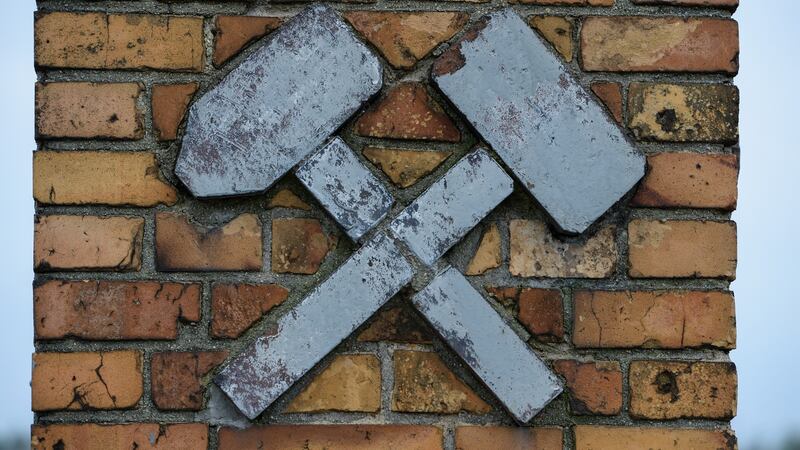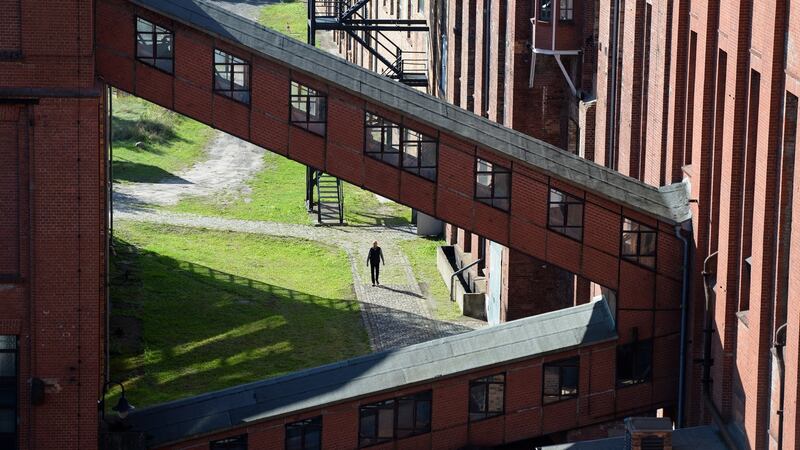Those prematurely nostalgic for the peat briquette should fly to Berlin and take a quick trip down the road to Lusatia.
While Bord na Mona has announced its plans to end industrial farming of peat and move towards sustainable energy and tourism projects, a similar experiment is already well underway in the Lusatian region.
There, hundreds of millions of euro are being spent transforming former open cast mines into a lakeland and, in parallel, an industrial heritage Energy Route has been created as a tourist attraction. Visitors can tour the Knappenrode briquette factory and its museum and experience the roar of the machines going full tilt.


The briquettes were made of lignite, a brown coal mined in open cast mines in the region. Lignite has for generations underpinned the economy of the area.
Mining dates back to the mid-19th century, originally in mine shafts, but then in massive open cast mines.
Essentially, lignite is peat further along the geological life-cycle, much harder than peat, but softer than coal, and containing more than 50 per cent water.
Unlike our peat which is found on the surface of bogs, lignite seams are often 90 metres or more deep, and are mined in deep open-cast mines.
Like our midlands bogs, the mining of lignite is nearing the end of its cycle.
This is not because the lignite is running out – currently the brown coal provides about a quarter of Germany’s entire fuel needs and there are enough deposits for mining to continue for at least another 100 years – but because of a political drive towards more sustainable energy.
The lakelands project is breathtaking in it’s scale, in fact it’s the biggest land-change project in Europe. Some 20 new lakes are in the process of being created from the former open-cast mines. It’s a slow process, taking up to eight years for the new lakes to fill from groundwater and local streams. Treatment is through plants close by the lakes.
While it will take many years to bring the water to a neutral Ph balance, it is perfectly safe for swimming and watersports.
Most of the lakes will have cycle and skateboarding paths right around the edges and several lakes will be joined by navigable canals. One of the most complete examples is Lake Senftenberg. There the trees are mature, the cycle path is popular, as is the new marina and a number of hotels and restaurants.
The Energy Route provides a series of visitor attractions. On the site of the former briquette factory, there is also a museum giving a good sense of miners’ and workers’ lives. From the bleak shower area to clothes hoisted high to the ceiling on locked chains, the visitor gets insights into the lives of workers in the former GDR.
Mining jobs. while tough, were prestigious and well paid. In the former East German republic, lignite was a vital fuel as the better quality black coal was not available in the east.
Active mining continues in the region, though employment has dropped tenfold from some 80,000 employed to just 8,000.
Visitors can tour a fully functional open cast mine at Wenslow-Sud. The tours, in four-wheel drive jeeps and mini-buses, take visitors skidding through the sand to the base of the mining area.
There, you stand in what must be one of Europe’s most unlikely tourist attractions, in what looks like a lunar crater, 90 metres below the surface.
Around you there is no vegetation, no trees, not a blade of grass, no proper landscape and no perspective, just layer after layer of sand and earth.
It’s a strange experience, made stranger by the knowledge that one day where you are standing may be the bottom of a lake.
The F60 machine which takes away the sand above, called “overburden” by the industry, is just over half a kilometre long.
It’s the largest earth moving machine in the world, so big I struggle to fit it into a wide-angle shot, and when I think I’m close and want to walk closer, my guide laughs – it’s so big my sense of scale and distance has been fooled, it’s still a drive away.
It is partnered by massive excavating machines whose buckets chew away at the seam on two levels, upper and lower, cutting a total depth of about 10 metres at a time.
As the machines eat into the seam the lignite is taken away on conveyer belts up to 11 kilometres long to be loaded onto trains and then fed into nearby power plants.
One such plant, the very modern Schwarze-Pumpe Lignite-fired power plant, welcomes visitors.
Again the scale is staggering; it’s a huge, immaculate plant, largely automated, run around the clock with a production staff of about 20 workers per shift.
The lignite is dried and then milled into small pieces which are blown into a furnace. The steam created powers a huge steam turbine which generates electricity.
My visit ends with a walk on the roof and I get to look out over the surrounding landscape, while close by, flue gasses are released from the huge chimneys.
The F60 machine features again at the F60 Visitor Mine at Lichterfeld. One of the world’s largest machines, known as the Lying Eiffel Tower of Lusatia, is open to visitors who can walk along the 501m length at a height of 74m – an unsettling experience at that height. Although long inactive and somewhat rusted, the heavy conveyor belt rollers still spin at the lightest touch, a tribute to its engineers. From the top there are good views of the surrounding the nearby lake, which was once an open cast mine, is attracting kite-surfers. There is a natural amphitheatre adjacent to the F60 and music festivals are held regularly, including a Celtic music festival.
With stunning natural lakes at home in Ireland, the artificial Lusatian lakelands region is not an obvious destination for Irish tourists, but at just over an hour’s drive from Berlin, it provides an interesting counterbalance to a city break, and an insight into a mining and energy heritage currently undergoing a remarkable transformation.
Frank Miller travelled to Lusatia as a guest of the German National Tourist Office. See germany.travel







